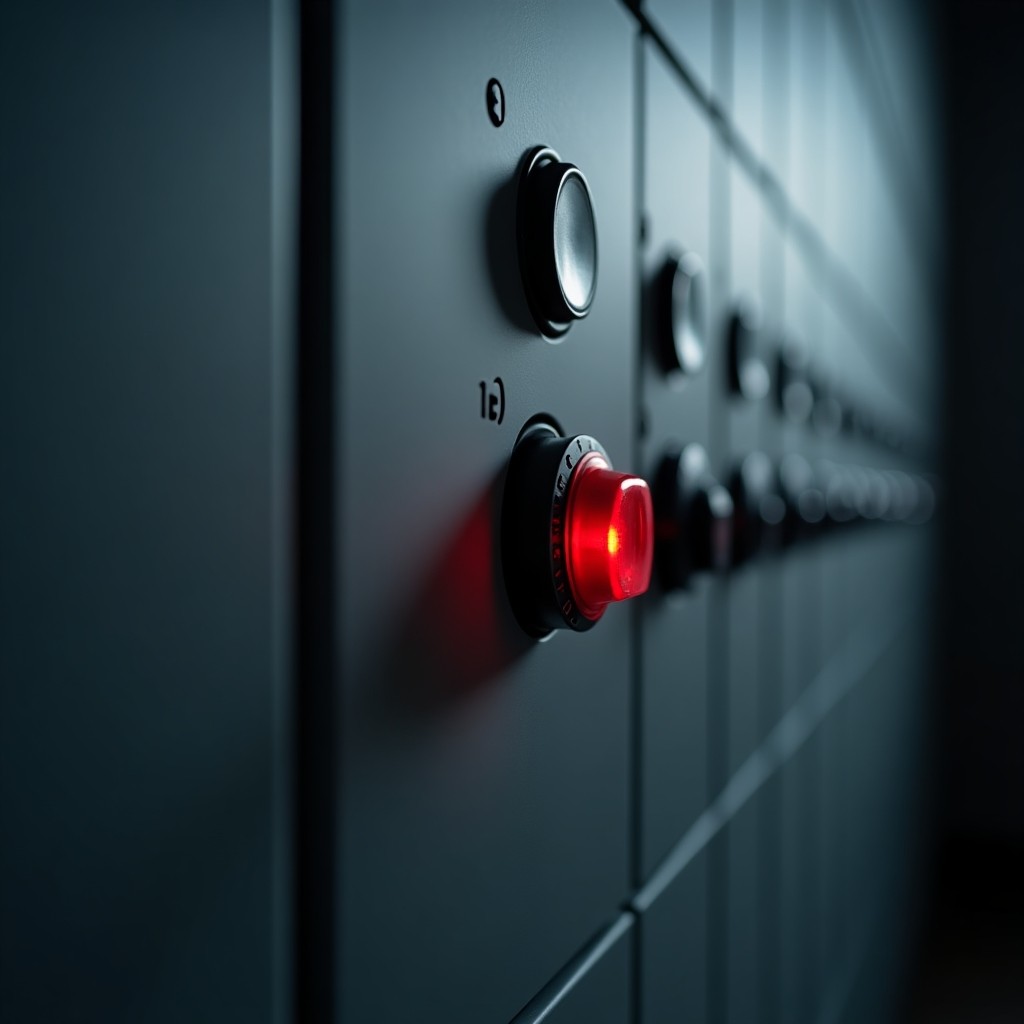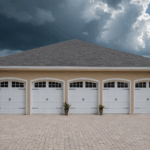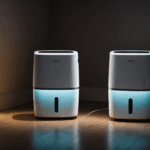Circuit breakers serve as crucial safety devices in your home’s electrical system, acting as vigilant guardians that automatically shut off power when detecting potential hazards. Located in your electrical panel, these mechanical devices monitor the flow of electricity through your home’s wiring system and respond instantly to dangerous conditions.
The primary functions of circuit breakers can be broken down into three essential protective measures:
- Overload protection: Prevents excessive current draw that could overheat wires
- Short circuit protection: Instantly cuts power when detecting dangerous electrical shorts
- Ground fault protection: Guards against current leakage to ground, which poses shock hazards
| Breaker Type | Protection Level | Common Applications |
| Standard Circuit Breaker | Basic overload and short circuit | General household circuits |
| GFCI Breaker | Advanced ground fault protection | Bathrooms, kitchens, outdoors |
| AFCI Breaker | Arc fault detection | Bedrooms, living spaces |
Unlike traditional fuses that require replacement after tripping, circuit breakers can be reset multiple times, making them a more convenient and cost-effective solution for modern homes. While some electrical issues may require professional attention, understanding how circuit breakers function is essential for basic DIY fixes and home maintenance.
Each circuit breaker in your electrical panel is rated for a specific amperage, typically ranging from 15 to 200 amps, depending on its intended use. This rating ensures that the breaker trips before the electrical current can exceed the safe capacity of the connected wiring and devices, preventing potential fire hazards and equipment damage.
Modern circuit breakers also incorporate sophisticated trip mechanisms that respond within fractions of a second to electrical faults, providing far superior protection compared to older technology. This rapid response time is crucial for preventing electrical fires and protecting sensitive electronic equipment in your home.
Causes for circuit breaker tripping
A tripped circuit breaker can occur for several critical reasons, each indicating a different type of electrical issue in your home. Understanding these causes helps homeowners identify potential problems and determine whether a simple DIY fix is possible or if professional intervention is necessary.
- Electrical Circuit Overload
- Too many devices running simultaneously on one circuit
- High-power appliances exceeding circuit capacity
- Extension cords daisy-chained together
- Short Circuits
- Damaged or frayed wiring
- Loose wire connections in outlets or switches
- Faulty device plugged into an outlet
- Ground Faults
- Water exposure to electrical connections
- Damaged insulation on wiring
- Defective appliances or tools
- Arc Faults
- Pinched or crimped electrical cords
- Worn insulation in old wiring
- Loose connections in the electrical panel
High-amperage appliances like air conditioners, electric heaters, and microwave ovens are common culprits behind circuit breaker trips. When these devices operate simultaneously on the same circuit, they can draw more current than the circuit breakers are designed to handle. This is particularly common in older homes where the electrical system wasn’t designed for modern power demands.
Weather-related issues can also cause circuit breakers to trip. Lightning strikes, power surges, or storms that damage power lines can send excessive voltage through your home’s electrical system. In these cases, the circuit breakers perform their vital protective function by cutting power before damage occurs to your appliances and devices.
Age and wear of the electrical system components can lead to more frequent tripping. Circuit breakers themselves can wear out over time, becoming more sensitive or failing to maintain proper connections. If your electrical panel shows signs of aging or you notice frequent trips without obvious causes, it’s time to consult a licensed electrician.
Signs of electrical circuit overload
Recognizing the warning signs of an electrical circuit overload is crucial for preventing potential hazards and maintaining a safe home environment. Early detection of these indicators can help you address issues before they lead to serious problems or require expensive repairs.
Several telltale signs indicate your circuits are struggling with excessive load:
- Dimming or flickering lights when major appliances turn on
- Warm or discolored wall plates on outlets and switches
- Burning odors coming from outlets or switches
- Buzzing sounds from outlets or the electrical panel
- Frequent circuit breaker trips when using multiple devices
Performing a basic load calculation can help identify potential overload situations. Add up the wattage of all devices typically used on a single circuit – if the total exceeds 1,800 watts for a 15-amp circuit or 2,400 watts for a 20-amp circuit, you’re at risk of overload.
Pay special attention to these high-risk scenarios:
- Multiple heat-producing appliances operating simultaneously
- Power tools running alongside other equipment in workshops
- Entertainment centers with numerous devices plugged in
- Kitchen appliances operating during peak cooking times
While some overload situations can be resolved with a simple DIY fix like redistributing loads across different circuits, persistent issues may indicate the need for electrical system upgrades. Monitor your circuit breakers closely – if they trip repeatedly even after reducing the load, this could signal a more serious problem requiring professional assessment.
Room-specific indicators can also help identify potential overload conditions. In kitchens, be wary of operating multiple high-draw appliances like microwaves, toasters, and coffee makers simultaneously. In home offices, watch for signs of strain when charging devices while running computers and printers on the same circuit.
Step by step breaker reset instructions
1. First Visual Inspection:
– Look for breakers that appear to be in the middle or “OFF” position
– Note any burning smell or signs of damage
– Clear the area of any obstacles
2. Identify Connected Devices:
– Unplug all appliances on the affected circuit
– Turn off light switches connected to the circuit
– Make a mental note of which outlets stopped working
3. Reset Procedure:
– Firmly push the tripped breaker to the complete “OFF” position
– Wait for 30 seconds
– Switch it decisively to the “ON” position
– Listen for a clear clicking sound
4. Testing and Verification:
– Gradually reconnect devices one at a time
– Wait several minutes between each connection
– Monitor for immediate tripping
Whether the breaker holds or trips again will indicate if you’re dealing with a simple overload or a more serious issue. If the breaker trips immediately after reset, or if it feels loose or hot to the touch, contact a qualified electrician.
Track your actions by documenting:
– Which breaker tripped
– Time and date of the incident
– Connected devices when the trip occurred
– Whether the reset was successful
Remember to stand to the side of the electrical panel when resetting breakers, and never force a breaker that resists movement. These mechanical devices are designed to operate smoothly, and any unusual resistance could indicate a serious underlying problem.
Safety measures when resetting breakers
Before attempting any DIY fix involving circuit breakers, always prioritize personal safety by following essential precautions. Ensure your hands and feet are completely dry, and wear rubber-soled shoes when standing near the electrical panel. Never attempt to reset breakers while standing on a wet surface or in a flooded area.
Keep these crucial safety measures in mind:
– Use a flashlight for better visibility when working with the electrical panel
– Stand to the side of the panel, not directly in front
– Wear safety glasses to protect against potential sparks
– Never touch multiple breakers simultaneously
– Keep metal objects away from the electrical panel
– Ensure the area around the panel is dry and clear of obstacles
If you notice any of these warning signs, stop immediately and call a licensed electrician:
– Charred or melted wire insulation
– Unusual sounds coming from the panel
– Burning smells or visible smoke
– Hot or discolored breakers
– Signs of water damage or rust
When working with circuit breakers, maintain a clear exit path and inform other household members about electrical work in progress. Keep a functional fire extinguisher rated for electrical fires nearby, and never use water to extinguish electrical fires.
Proper panel maintenance enhances safety:
– Keep the panel cover secured
– Maintain proper labeling of circuits
– Remove dust and debris regularly
– Ensure adequate lighting in the panel area
– Keep a minimum 3-foot clearance around the panel
If you’re unsure about any electrical issue or encounter repeated breaker trips, it’s always safer to consult a professional rather than risk an unsafe DIY fix. Some electrical problems require expertise beyond basic homeowner knowledge and could pose serious safety risks if handled incorrectly.










